What are water pumps for wells
It is not always possible to pave the central water supply to the suburban area, and without it, life here is sometimes simply impossible. Therefore, the vast majority of owners are trying to get drinking water from the bowels of the earth, producing wells and using water pumps for wells. The latter help to raise the liquid to the surface, and there remains only one question - to stretch the plumbing into the housing.
Electric or manual versions are used, and maybe two in turn, if there are problems with the power supply. Each of them has its own characteristics, so before making a decision, it is necessary to deal with them in detail in order to get what you want from them.
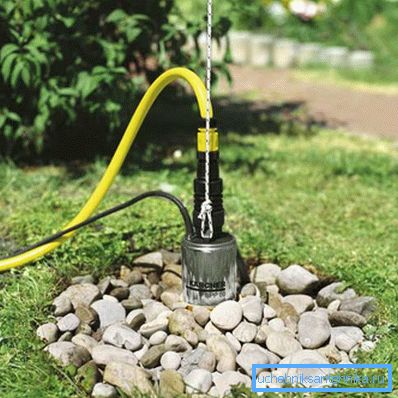
What to consider
- The depth of the well and the level of the water column in it. Lower to the bottom the load on the jute rope, so you define:
- total depth - from the sinker to the surface;
- the water column is the wet part of the rope;
- the distance to the water mirror is the dry part of the rope.
This information is needed to determine the model of the pump, where the corresponding values are indicated in the data sheet. Just compare them with your parameters;
- the debit of the well or the amount of water it can give in a certain time. It’s hard to know for sure, but approximate data is enough.
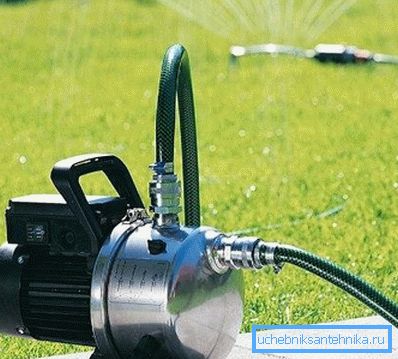
It is determined simply - rent a pump from the neighbors and note the time when it will completely drain the water from the well. Then wait until it is completely filled and divide the first time into the second.
Exact data is almost impossible to determine, but approximate enough;
- Diameter to know the size of the future pump. It is desirable that it be more than 100 mm, then the choice will be large enough;
- The required amount of water for life, as the pumps differ in power. For example, for a family of 4 people, the 60 l / min option is suitable, and for gardeners it is needed much more powerful;
- Flushing well, which depends on the device. To constantly clean the pump is not the most pleasant thing, and it can fail quickly. Therefore, it is better to choose a model for a particular well, even if their price is more expensive than universal options;
- The ratio of cost and quality, as consumers are offered designs of different price categories. The price includes a cable for support, a ROM, a circuit breaker and other mechanisms, the performance of each of which affects the entire unit. Special attention should be given to underwater connections.
Types of pumps for wells
There are two groups:
- superficial;
- submersible.
- Water surface pumps for wells are installed on top of the wells and produce water trapping by suction.. They are limited by the level of the mirror of water from the surface, which can be no lower than 5-8 m. Otherwise, the ascent is impossible. It is best to pump water through a metal, plastic or metal-plastic pipe of small diameter. The rubber hose is not suitable for this purpose, as it will shrink during suction. Their advantage is easy installation and dismantling and ease of maintenance.

- Submersible pumps work differently.. They descend 2-3 m below the water level and push the water to the surface. It does not matter the depth of the well, the main - at what height the unit can raise the liquid. The simplest household options can do this up to 40 m, which is enough for a country house. The rise of water is carried out by a rubber hose. The disadvantage is the difficulty of maintenance, as it will periodically have to pull the pump to the surface. The performance of the system depends on the power and type of electric motor. At the same time with every meter of depth, it will fall. Such pumps are equipped with automatics that protect against "dry running" and overheating.

Submersible systems
Vibrating
The principle of operation is from the pressure difference between the vibrator and the rotor, which causes the diaphragm to oscillate. The models known on the market are “The Kid”, the Streamlet ”,“ Aquarius ”.
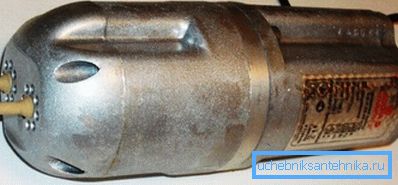
Try to get models with a built-in thermal switch and with a fence at the bottom. When the soil is abundant in clay, place the pump deeper from the surface of the water. From the vibration of the well will begin to gradually deteriorate, so you should immediately pump out turbid water, which can clog the system.
Tip: if the vibrating pump gets into the mud during operation, lift it with the electric motor on.
Devices are inexpensive, but problematic in operation, especially during long work.
Centrifugal
Universal system, well suited for wells. Such pumps operate under the action of the blades and wheels, under which the liquid falls, and then it rises up due to the action of centrifugal force. The cost of models corresponds to the declared quality, they are the most popular today.
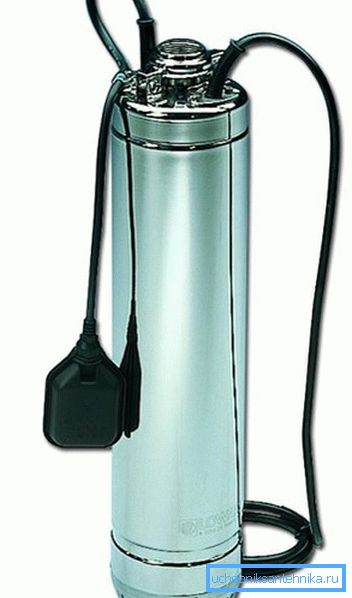
Hand pump for well
If there are no power lines near, there are interruptions in electricity or water is often not needed in large quantities, you must have a hand-operated system at hand. Pumps of this type are sucker-rod and piston.
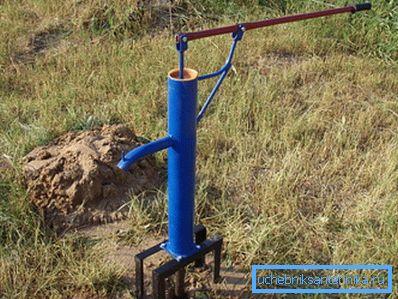
The first ones are designed for depths of more than 7 m. Lower the pump cylinder to the full length of the well, install a string of pipes and raise the water thanks to a non-return valve.
The second option is designed for shallow depths, up to 7 m. The mechanism consists of two valves installed in a cylinder with a piston. During the movement of the latter, a vacuum is created, because of which the water rises, the suction valve opens, and the other closes.
Advantage:
- work without electricity;
- cheap;
- ease of operation.
Minus - the rise of water requires the application of physical force.
Pump installation
Installing a water pump in the well is a simple procedure, but has its own characteristics.
Below is a guide:
- Calculate the footage of the hoses (~ 20 mm).
- Hang the pump with your own hands on the nylon cord, as the metal cable can damage the casing. It must have a safety margin of 5 times the weight of the pump.
- Install a damper rubber gasket on the pump that will damp the vibrations.
- Immerse the unit in the well to a depth stated in the data sheet, make sure that the bottom is not less than 300 mm.
Tip: The pump should not touch the walls of the well.
Conclusion
The article reviewed surface, vibratory, centrifugal and manual water pumps for a well. Described their features and installation options. In the presented video in this article you will find additional information on this topic.